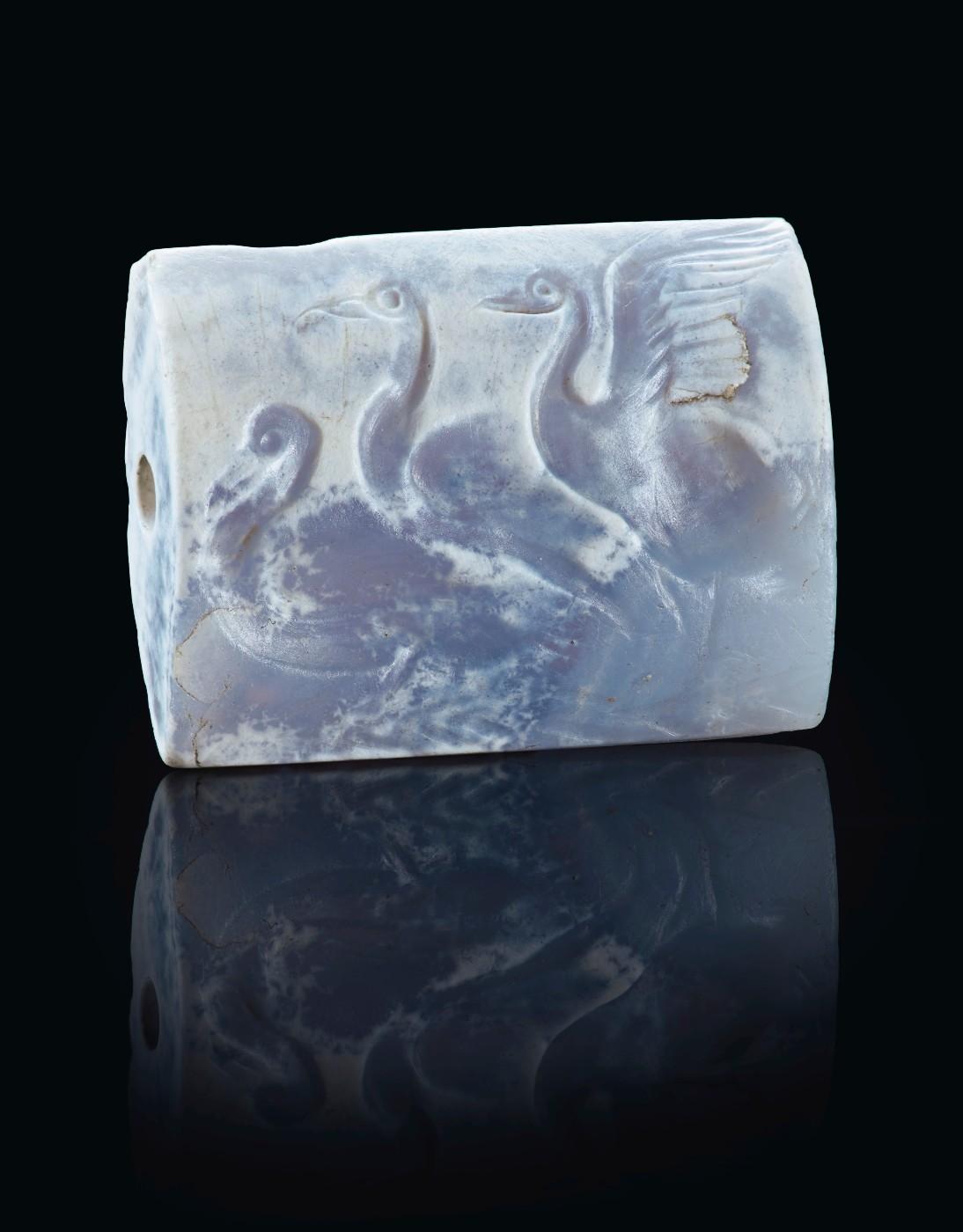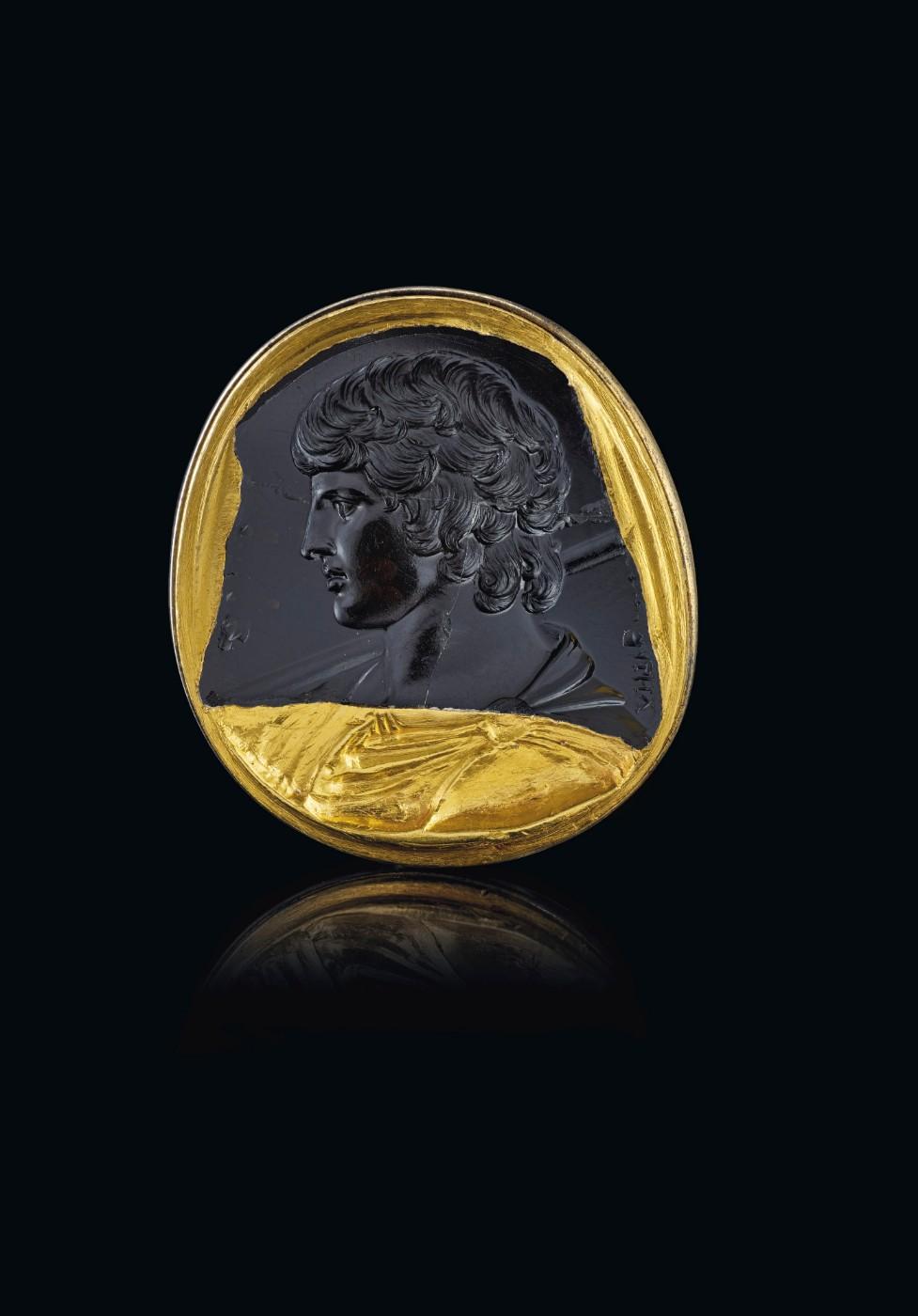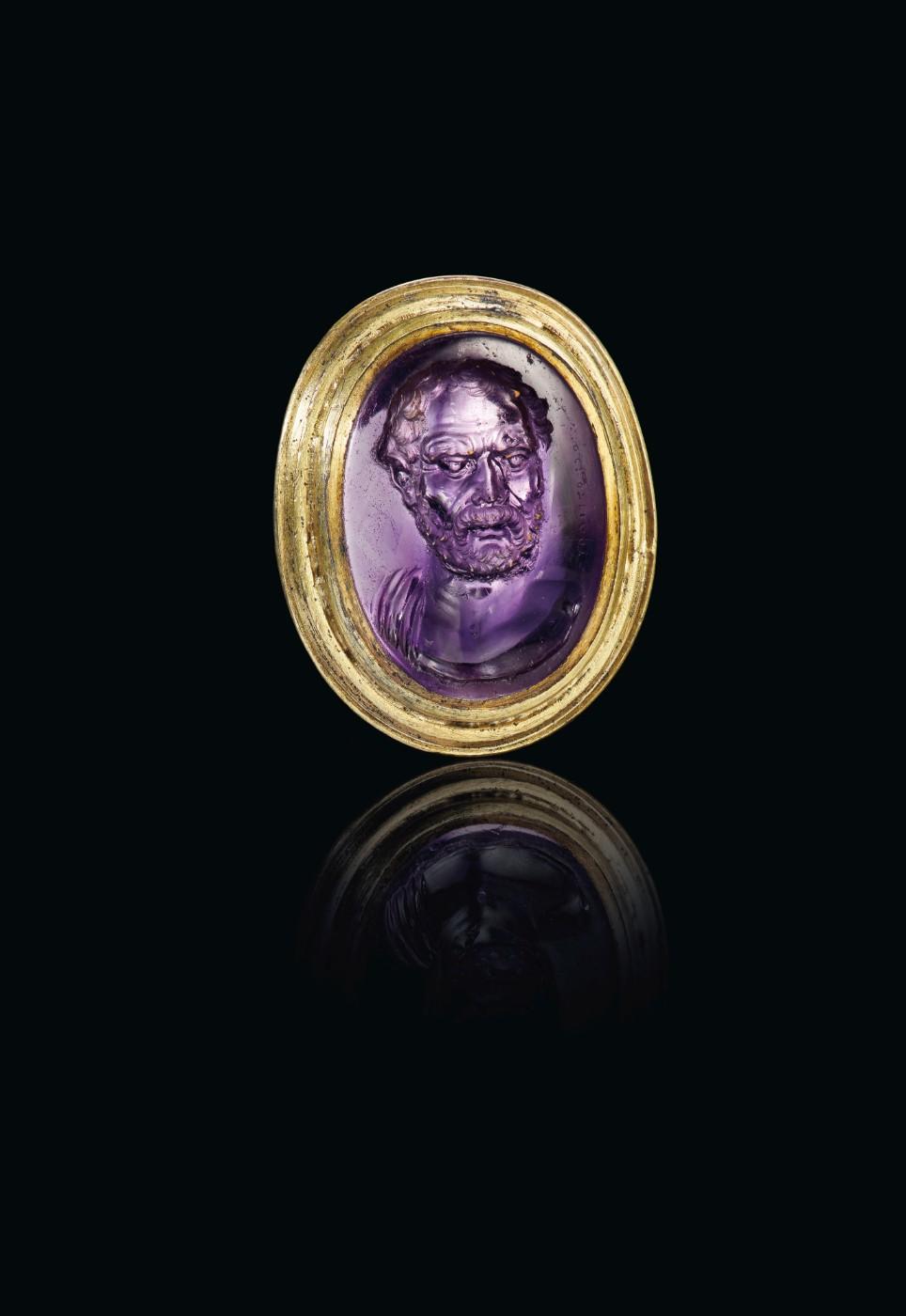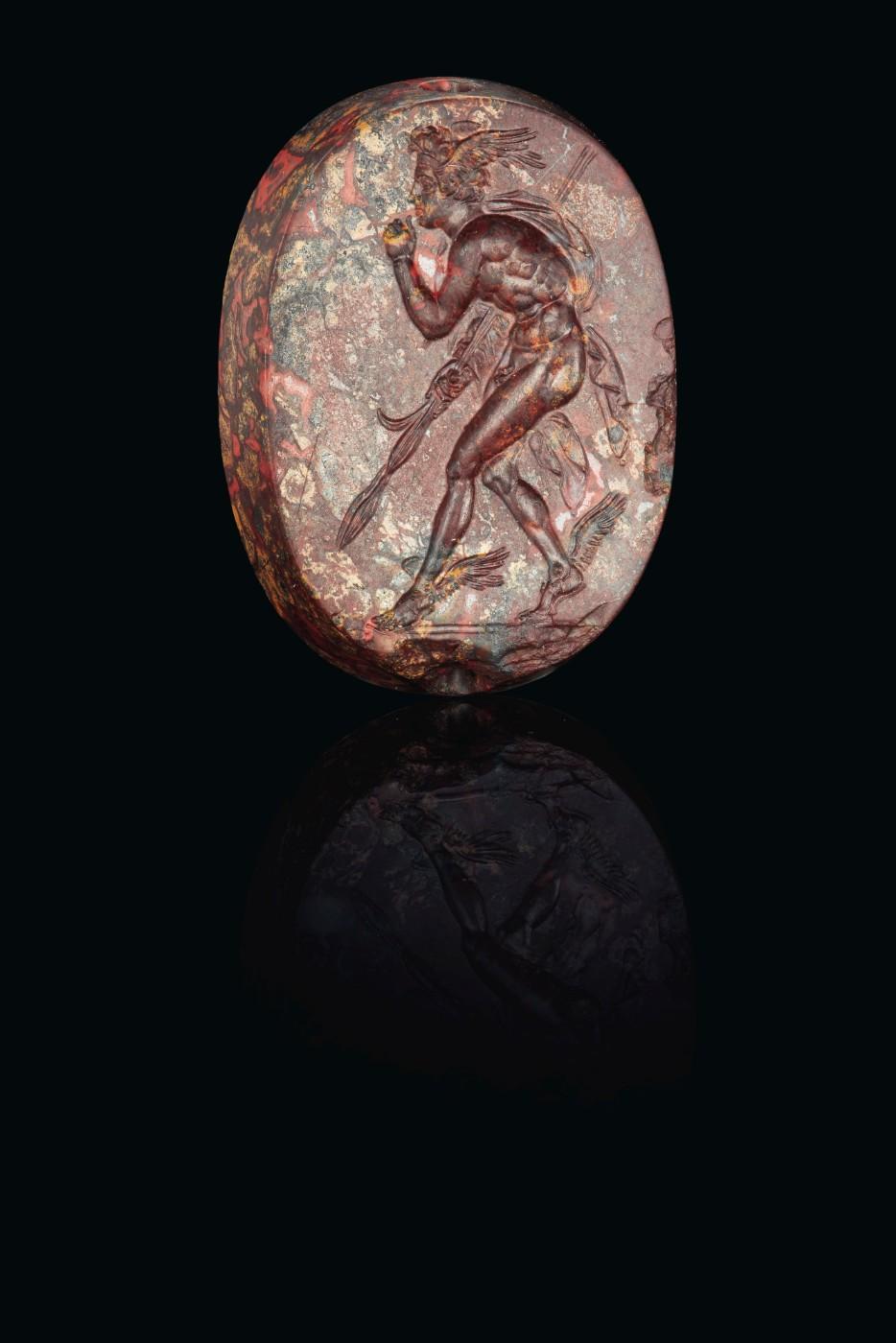Highlights from the acquisition include two of the greatest known ancient gems: a Roman intaglio portrait of Antinous, superbly engraved in black chalcedony circa 130-138 A.D., and a Roman amethyst ringstone with a portrait of Demosthenes, signed by the artist Dioskourides, circa late 1st century B.C.
The gem portraying Antinous, the young lover of the Emperor Hadrian (ruled 117-138 A.D.), was engraved on an unusually large black chalcedony stone. Depicted in the guise of a hunter, Antinous wears a cloak over his shoulders pinned in place by a circular fibula and carries a spear. His idealized facial profile features a rounded chin, full lips and thick hair arranged in luscious curls that cover his ears and fall along his neck. The extraordinary quality of the engraving has led many to proclaim this the finest surviving portrait of Antinous in existence in any medium and one of the finest classical gems to have survived since antiquity.
Known as the Marlborough Antinous, it passed through many distinguished collections since its rediscovery, probably in the early eighteenth century. So great was the mania inspired by this gem that its first documented modern owner, the Venetian collector Anton Maria Zanetti (1679-1767), supposedly said that he would have sold his house to buy it. From him the gem was purchased by George Spencer (1739-1817), the 4th Duke of Marlborough, who wrote that it was “of an incredible beauty,” making it the highlight of perhaps the most extraordinary collection of antique gems ever assembled. It was sold at auction with the entire Marlborough Collection of gems to David Bromilow in 1875 and then separately in 1899 to Charles Newton Robinson, whose collection was in turn dispersed at auction ten years later. It was acquired at auction in 1952 in London by Sangiorgi who considered it an “excellent work of courtly art comparable with the most celebrated portraits of Antinous….”




























